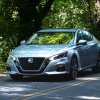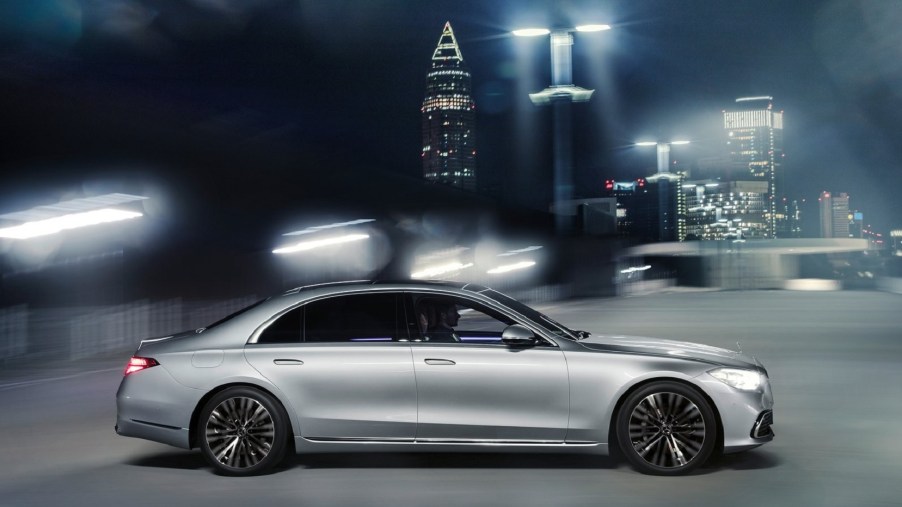
How the Mercedes S-Class Shows the Future of Car Safety
The 2021 S-Class isn’t just another Mercedes luxury sedan, or it wouldn’t be the base for Maybach’s sedans. It’s the brand flagship, meaning it gets the latest and greatest luxury features and gadgets. But the new Mercedes S-Class also brings a ton of car safety features to the party. Ones that could preview where the industry as a whole is going.
The Mercedes S-Class has often been at the forefront of car safety
The Mercedes-Benz S-Class didn’t introduce every single modern car safety feature, Hagerty explains. The Jensen Interceptor, for example, was the first production car with ABS. The 3-point seat belt was invented by a Volvo engineer. And although GM was the first to offer airbags, the Porsche 944 Turbo was the first to have them as standard equipment.

However, that’s not to say the Mercedes S-Class wasn’t a car safety innovator, Car and Driver explains. Although the first S-Class named as such was the 1972 W116 model, its origins date back to the 1954 W108. Which, in 1959, was the first production car with crumple zones. Then in 1981, the W126 added a standard driver’s airbag and seat belt pre-tensioners.
Later Mercedes S-Class models added electronic car safety features to the mix. The 1991 W140, whose parts were used in the Maybach 57S, was the first production car with standard stability control. In 1996, it gained braking assist, a kind of automatic emergency braking prequel.
And despite the 1998 W220/W221’s quality and electric issues, it was still a safety pioneer, Car and Driver reports. By 2005, it offered night vision and adaptive cruise control, on top of luxury features like air suspension and Active Body Control.
Even the last-gen Mercedes S-Class, the W222, introduced novel features. It was the first production car with all-LED lighting and offered an early look at partially-autonomous driving. It even had a Crosswind Assist feature and suspension that used cameras to read the road and prepare for bumps.
What the 2021 Mercedes S-Class brings in terms of safety features
So, what does the 2021 Mercedes S-Class, the W223, bring? The short answer is, quite a lot, The Drive reports.
Firstly, its active suspension comes with something called Pre-Safe Impulse Side. If the 2021 Mercedes S-Class is about to be hit side-on, the whole car rises by 3”, to take the impact on the sills. That way, instead of the doors taking the hit, the stronger frame does instead. The Audi A8 offers a similar feature, but it only lifts on one side.
The 2021 Mercedes S-Class also has many airbags, including ones for the driver’s knee, similar to the Acura TLX. However, it’s also offering an industry first: airbags for the rear passengers built into the back of the front seats. Technically, the Nissan President offered a rear passenger airbag first, Autoweek reports. But this is the first time all the rear passengers will get such an airbag.
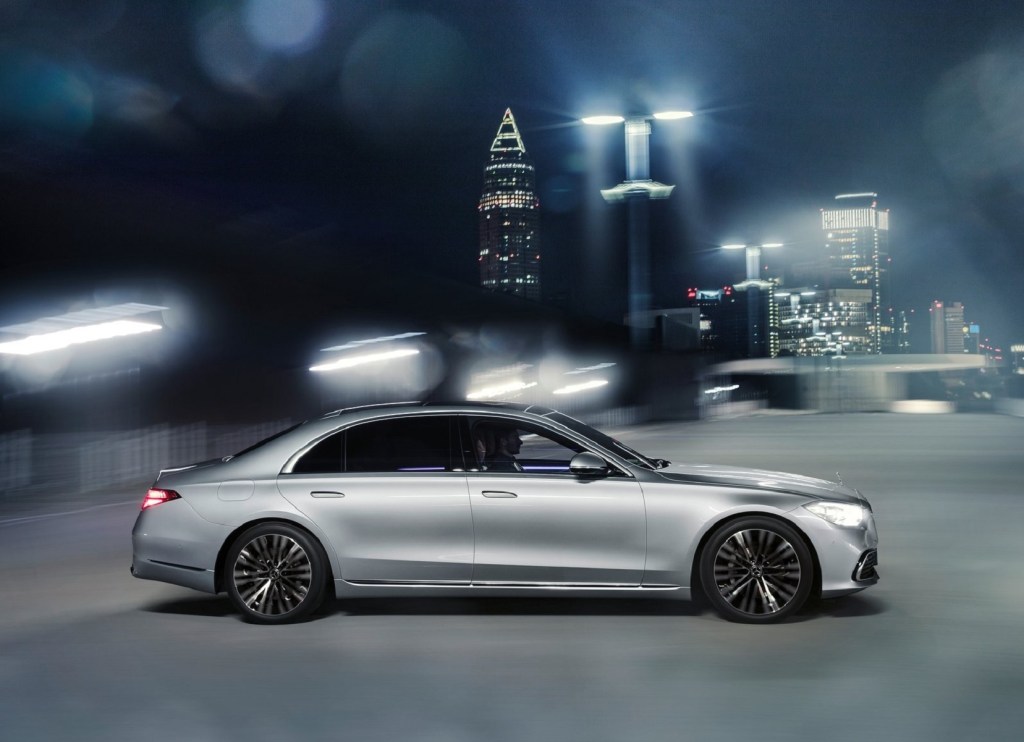
Nowadays, ADAS features like adaptive cruise control, blind-spot monitoring, and lane-keeping assist, are standard on the higher-end trims of many cars. Naturally, the S-Class offers all that as well, Car and Driver reports. However, it takes ADAS one step further.
The sedan can project warnings, stop sign alerts, and other signals onto the road ahead to remind the driver, Autoblog reports. The blind-spot monitoring also syncs with the turn signals: they pulse red if you try to turn into an occupied lane, Roadshow reports. Plus, with the infotainment-screen-mounted camera, the S-Class lets you know if a cyclist is coming in from behind before you open the door.
However, arguably the biggest news is Mercedes’s claim that the 2021 S-Class is capable of Level 3 autonomy, Hagerty reports.
Is it really ready for Level 3?
It’s important to note that Level 3 autonomy is not self-driving, Roadshow explains. Level 3 is what the SAE dubs ‘conditional autonomy.’ Essentially, it means the vehicle can directly control itself in specific parts of a journey. For example, over long stretches of freeway. The driver still has to remain vigilant, but the vehicle is no longer merely an assistant.
That being said, it is one step higher than Tesla’s Autopilot and GM’s Super Cruise systems. Both of these are Level 2, or ‘partially autonomous.’
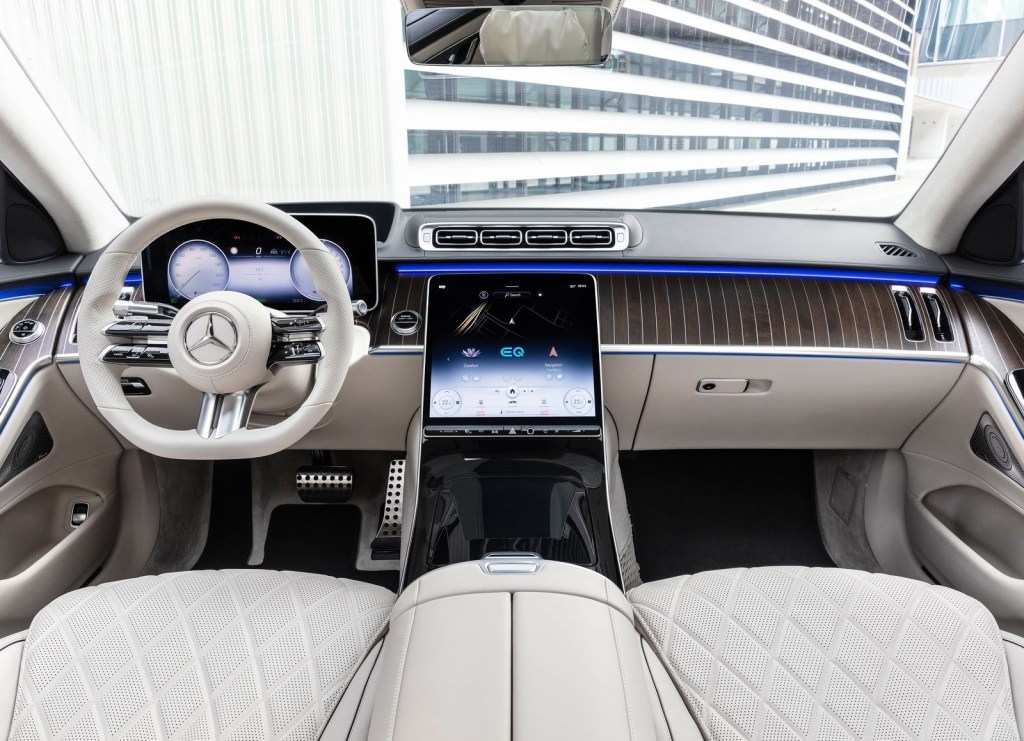
Because Level 3 still requires driver vigilance, the Mercedes S-Class has a driver’s gauge-mounted camera that checks for signs of drowsiness. And to better sense if the driver’s hands are on the wheel, it now has capacitive-touch pads.
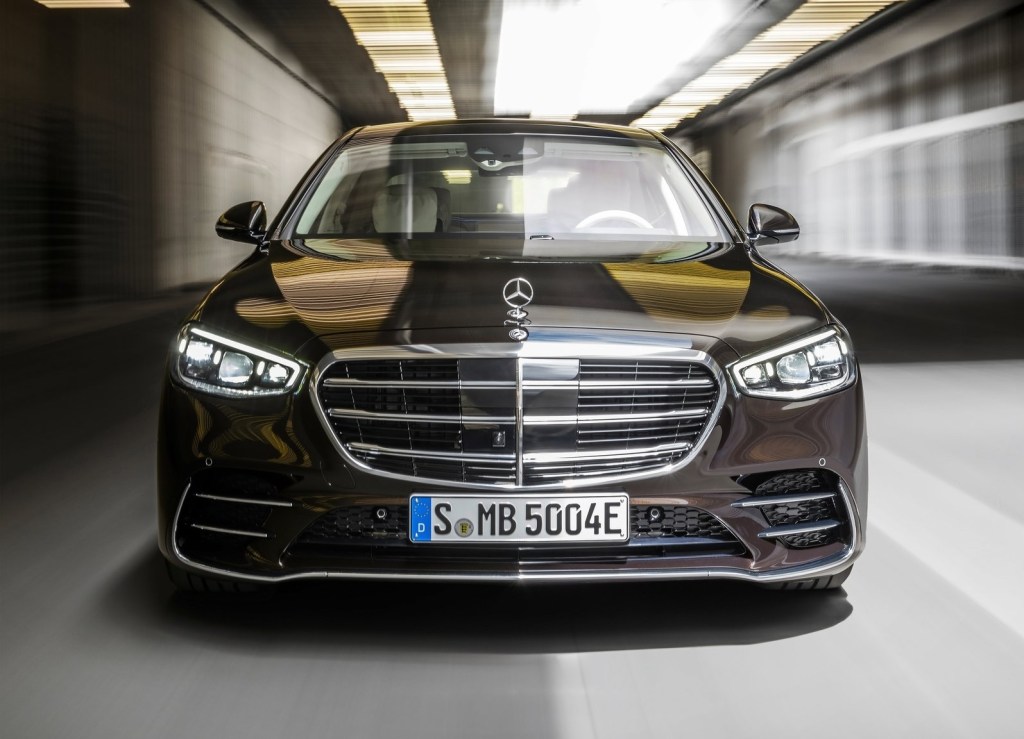
As for the actual sensor tech, the 2021 S-Class features lidar, a 360° camera system, and multiple external microphones. The sedan’s active-steering assist now works up to 130 mph, and its automatic emergency braking works up to 80 mph. And, when equipped with its upgraded parking package, the Mercedes S-Class can literally park itself.
However, the Mercedes S-Class won’t be truly Level 3-capable until the second half of 2021, and that’s only in Germany. Apart from the parking package, all of these car safety features are included in the US-spec S-Class. But American and European government legislation means only Germany will receive the necessary Level 3 software.
Mercedes may be ready to take the S-Class to Level 3 autonomy, but the world isn’t ready for the S-Class.
Will these features become available on cheaper cars?
As we’ve mentioned previously, the Mercedes S-Class often previews car safety features that later become widespread. A great example of this is the W220 and its adaptive cruise control. But it took about a decade and a half for that ADAS feature to become relatively widespread. And some cars still don’t come with it as standard.
Something more mechanical, like the rear frontal airbag, may be easier to implement. It’s just a matter of cost and space. I wouldn’t be surprised if that airbag requires a certain minimum seat size/thickness for installation. Therefore, as it does in the S-Class, it may require equipping the plusher seat option.
The partial autonomy, though, is a bigger question mark. That’s dependent not just on engineering, but legislation, too. But GM is starting to spread its Super Cruise to cars outside of Cadillac. Theoretically, Mercedes may do the same for its cars as well.
It’s just a matter of time.
Follow more updates from MotorBiscuit on our Facebook page.

